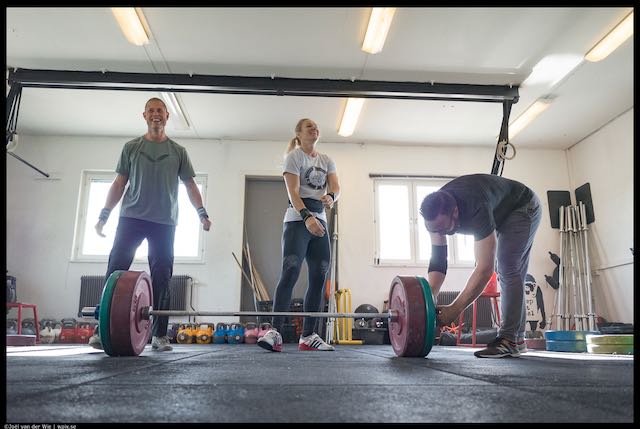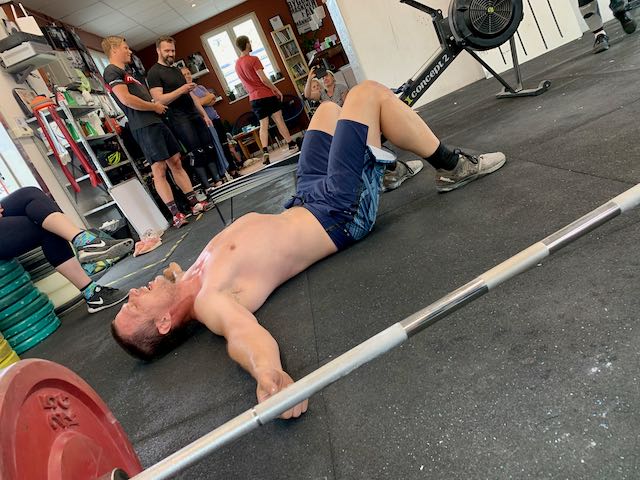“O Icarus,”
Ovid, “Metamorphoses“
he said, “I warn you: fly a middle course.
If you’re too low, sea spray may damp your wings;
and if you fly too high, the heat is scorching.
Keep to the middle then.
Reading and listening to coaching podcasts these last six months one of the questions that the COVID-19 situation have made people to ask and coaches to ponder is the question of how little one can train in order to not revert the adaptation to training. While one can certainly see why that question would seem important in a world of quarantines and temporary lock-down of training facilities, in many ways it is an expression of the doubtful idea that hidden deep within there is something “naturally you” that you can “enlarge with stress”. A “ground zero” that if not continually challenged you fall back upon.
Hans Selye wrote his famous letter to Nature magazine in 1936, describing how rodents exposed to a variety of nocuous or toxic agents (like cold, surgery, forced exercise, adrenaline and various drugs) responded to these diverse stimulus with pathophysiological changes that had some common features (like enlargement of certain organs). If the treatment was continued with relatively small doses, the animals became resistant and their organs returned to their normal state. Later the terms “general alarm reaction” and “general adaptation syndrome” were proposed for the description of these two phases of the response.
This shaped the current understanding of biological adaptation and the associated terminology, like stress, homeostasis, fight or flight to populate the scientific and popular narrative. A narrative implicating that the physiological stress response follows a stereotypical non-specific trajectory of being predominantly caused by physiological challenge and that its consequences are primarily physiological in nature. Based on this model, for a parameter to deviate from its setpoint value, some internal mechanism must be broken.
In order to force adaptation to training, one should add enough – but not too much – mechanical stress and little by little, in a very predictable way, you would be able to expand your capacity. But as the original setpoint would still be where it always was it would mean that if the stress would discontinue you would fall back to a relatively stable equilibrium maintained by those physiological processes. However evidence accumulates that setpoints are not constant. Their variations, rather than signifying error, are apparently designed to reduce error by anticipating and modulating future needs and resource allocation.
The theory of allostasis proposes that the first mediator – the event first triggering the stress response – is not a physiological stressor. The response is rather triggered by the changing emotional state of the individual brought about by personal interpretation of their capacity to cope with the imposed challenge. This would explain why the structurally rigid and perfectly linear training systems are only successful in text-books, and that we should shift our focus to the increasingly apparent effects of non-physical factors like emotional regulation, anticipation and learning in order to design well functioning training protocols.
In theory there is no difference between theory and practice, while in practice there is
Benjamin Brewster
The perfect predictable plan might be a beautiful idea, but is as likely to be real as the treasure at the end of the rainbow. In reality adaptation is dependent upon context, constitution, history, and persistently transitioning biological states. Studying successful strength-sport coaches will reveal a common theme: very few exercises, relatively consistent loading (even from cycle to cycle) and a focus on technical mastery challenged by increases in perturbations and contextual interferences.
Coaching legend Dan Pfaff, a proponent of minimalist training plans, notes that generally training regiments are too dense and that the goal of a great coach should be to see how little their athletes can do and still improve and be great. It’s all too easy to create an addiction to work and density of work. When new athletes try harder, they get better but there is a tipping point as they develop where this actually becomes a problem, where trying harder no longer works. The athlete is now a different athlete, and would need different not more to improve. More will inevitably lead to injury, and injuries put a stop everything.
With this in mind the question posed in light of the pandemic seems to be the result of a flawed and potentially dangerous way of thinking. One does not fall back toward anything, as that thing does not exist any more. The exposure to stimulus, both inside and outside of the training facility, constantly changes who you are, not just biologically but also psychologically, and most important of all in a non-linear fashion.
You always adapt into something that is your bodies best guess at what you will be able to cope with in the current and anticipated circumstances. Thinking you do not respond in this way will potentially lead you to fall into the trap of monotony and over-saturation.
And after all, if stupidity did not, when seen from within, look so exactly like talent as to be mistaken for it, and if it could not, when seen from the outside, appear as progress, genius, hope, and improvement, doubtless no one would want to be stupid, and there would be no stupidity.
Robert Musil, “The man with no qualities”
Of course, you would say, but is this really an issue? I mean, you would have seen every coach in the world roll their eyes while talking about other coaches who do not understand this simple point. That “too much is too much” (of course it is) and that “more is not better”. And if everyone is saying that they are not guilty of making these mistakes, then no mistakes are made?
And yes, this might be true, but as true as when you are a little drunk, feeling like a million dollars you tend to fall for the tempting thought that if you double the intake of alcohol you’re gonna have twice the fun! And so, by thinking in linear and physiological terms only, and not considering the effect your (tipsy ?) emotional state has on both stress response and behavior, you go for that quick satisfaction rather than to play the long-game.
And often enough the same coaches use the image of a pyramid when describing how training works, hinting that a stable general base must be built to support the specifics. And is not that an expression of the very same oversimplification as the theory of homeostasis taking on the concept that has been successful when working with things and try to use it when working with humans?
Worse still, backed up with (faulty) logic makes it very hard not to go for the same mistake over and over which I think can be seen in a lot of training programs.

The mental image of the simple and predictable physical universe, where what worked before will always work again is so tempting because it reduces confusion and cognitive dissonance by being inherently measurable. And what is more easily measurable than training volume (but also unfortunately all too easily mistaken for functional productivity)?
I believe in the type of program often referred to as “complex” or “concurrent”. It generally includes no general preparation phases where one would do little to no specificity, as well as no specific preparation phases where one would do the opposite. Instead I have my athletes do a little but not too little of everything all the time, as growth and self-organization in a dynamic complex system can be the result of an amplification of change elsewhere in the system. Who can tell exactly what an athlete needs to be able to take that next step?
Instead of having the long term macro-perspective control what I do day to day I work with relatively little organizational variation between cycles. Then I monitor how the athletes respond (how they move, how they feel) on a daily or weekly basis. Information I use to prescribe exercises with enough contextual challenge to force adaptation and learning (rather than trying to force this with just more reps). Do I not add workload at all? Sure I do, but I do it based on acute factors rather than from mathematical reasoning.

To provide an insight in how this might look in practice: I usually rotate 2-3 very similar weeks, or blocks if you want to think of it like that. The next rotation does not have changes in loading per se, but novelty is induced by slightly changing how exercises are performed within a fairly general and simple theme.
This example is for our sprint cyclists (who all follow similar outline with some personal adjustments) but I do not structure the complementary training much differently for other cyclists or endurance athletes.
The general idea of force production as a contextual skill is similar for the CrossFit, racket sports or team sports athletes I train, but as their sports are so much more complex (than cycling, running, skiing) the outlines i write for them differ quite a bit. I will follow up with more specific examples of how the training blocks I write for open sports look in a later post.

Some benefits to this type of training is that it makes it easy to adapt to with actual performance goals in mind. Programs that empathize large variations in between phases will make it hard to see what is actually driving the trend. The smaller, simpler program allow for scalability and for data collection of the most important variables all season long.
Other benefits are that one constantly addresses the systems long-term behavior, producing a stable state of performance. While one might not always be on the absolute top, we’re always damn close to it without any drastic changes either in volume or intensity. By doing so we are reducing the risk of injury from either over or under-training.
- “Hans Selye and the Birth of the Stress Concept”, http://www.brainimmune.com/hans-selye-birth-stress-concept/
- “Essay: A New Understanding of Stress and the Implications for Our Cultural Training Paradigm”, https://www.researchgate.net/publication/296060661_Essay_A_New_Understanding_of_Stress_and_the_Implications_for_Our_Cultural_Training_Paradigm
- “Allostasis, Homeostasis, and the Costs of Physiological Adaptation”, https://books.google.se/books/about/Allostasis_Homeostasis_and_the_Costs_of.html?id=mIa5LVHjB-MC
- “Is history a good predictor of the future?”, http://www.mcmillanspeed.com/2015/07/a-coaches-guide-to-strength-development.html
- “How Survivorship Bias Distorts Our View of Successful Entrepreneurs”, https://www.entrepreneur.com/article/287440
